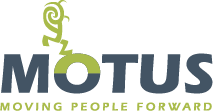With diversity, equity, and inclusion being used almost interchangeably in corporate environments and strategies, it is important to start to distinguish between the three large words, concepts, and meanings. These constructs can be hard to define because they are often shaped by one’s worldview and life experiences.
Here is one of many ways to look at and connect them to our professional selves and environments:
Diversity
Diversity can mean many things. There is diversity in thought, race, gender, socioeconomic status, abilities, culture, backgrounds, age, marital status, sexual orientation, etc. Defining diversity means going beyond simple demographics and embracing all the things that make us, as individuals, unique.
Think about the last team you were a part of – everyone had their own talents, strengths, and weaknesses, right? It wouldn’t be an effective team if it wasn’t made up of people with individual talents; people who can see the big picture, ones who get down in the details, those who are influencers, and so on. Therefore, we can’t expect everyone on our teams to be the same, think the same, believe the same things, or come from the same place as us. What makes us diverse as individuals makes us strong as a team.
Equity
Now, we’ve established a diverse team brings various skillsets, backgrounds, and experiences. So how do we make sure everyone is treated fairly? And if diversity is what makes our team strong, how do we make sure we have the right players?
A common misconception is in order to be fair, you must treat everyone equally. Although, with a diverse team with different abilities, not everyone will need the same things to develop and grow. Equity is providing everyone what they need to be successful rather than treating everyone equally. In some cases, that would look like offering a seat at the table to someone who might not be otherwise be considered because of an unconscious bias. For example, if several individuals are being considered for a promotion, how can we be sure the right people are in consideration. Did everyone have a chance to express interest or be included in the deliberation, or are we only thinking about those we sit with at lunch?
Additionally, in the recruitment process, managers often express interest in candidates from a specific school or favor those with a particular level of education. Quite often we don’t challenge this bias enough and this boils down to people of a certain socio-economic status having the access to big-name schools and consideration only goes to those who fit those boxes. By providing equity in the workplace, we are creating culture and processes that provide equal access to jobs, promotions, and seats at the table.
Inclusion
Inclusion is fueled by the feeling of belonging of diverse individuals; in the workplace, it is what retains talent. Inclusion is defined as the act of being included, belonging, feeling a part of the larger group. As recruiters, we work to find diverse talent, and as organizations, we must cultivate environments for everyone to feel heard and valued. In 2016, people of color in Oregon experienced more than double the unemployment rate of their white counterparts. Companies have spent years working to hire and promote diverse individuals and more recently have had to shift focus into retaining them as well.
These three extremely dynamic and complex concepts work together to recognize the differences that exist between us on the individual level, provide equitable access to systems such as employment and promotions, and affect people’s decision to seek out and stay with certain employers, managers, and companies. As one can imagine, diversity, equity, and inclusion absolutely affect the bottom line in business which is why companies are placing so much attention and efforts into building robust DEI programs, strategies, and organizations.







